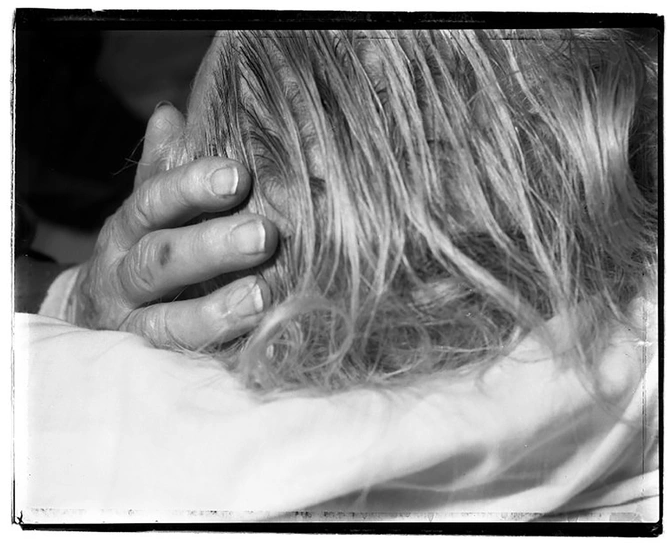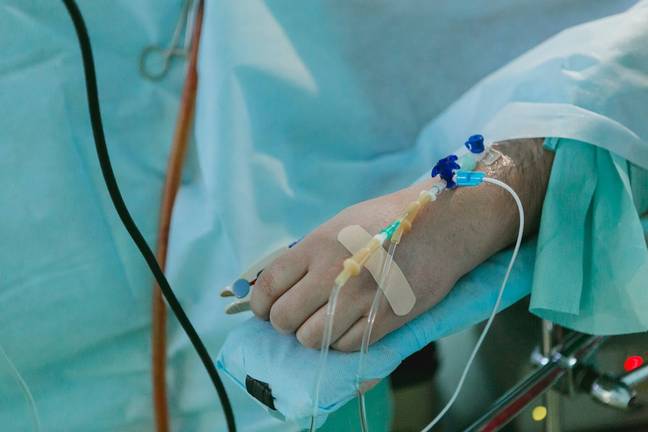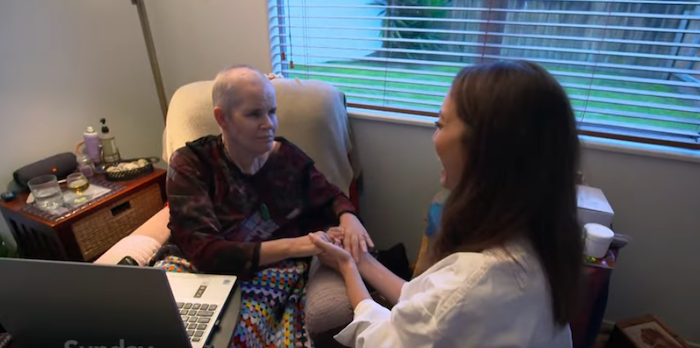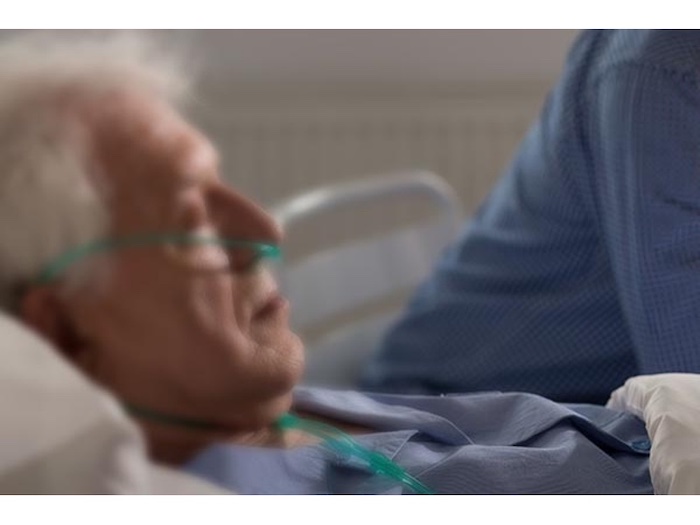The dying process is unique to each person, however there are a few common changes that happen to almost everyone when they are in the last days of life. Some of these might look distressing, but most of the time the person is not in any pain, and they are just a normal part of dying.

Loss of appetite
When someone is at the end of life they will typically have less appetite, as their need for food and drink reduces. If they stop drinking and their mouth looks dry, this does not necessarily mean they are dehydrated.
It might be too much effort to eat and drink. If this is the case you can offer sips or small bites, provided they are conscious and can still swallow. You can also help someone with a dry mouth by:
- offering a drink through a straw (or from a teaspoon)
- moistening the mouth with a damp sponge – special kinds of sponge are available for this purpose (the person may bite on this at first, but keep holding it, as they will let go)
- placing ice chips in their mouth
- applying lip balm
Changes to breathing
As a person becomes less active towards the end of their life, they need less oxygen. Breathing may become shallower and there may be long pauses between breaths. They might yawn frequently, as this is a natural response to draw more oxygen into the body.
Their breathing can make a noise because they are not able to properly re-absorb fluids in their chest or throat, which can cause a rattling sound. This may be upsetting to hear, but it doesn’t mean they are in distress or need oxygen. It can be a bit like snoring – it affects those who hear it more than the person who is making the sound.
If their breathing is very loud, it may be helpful to change their position so they are on their side, as long as this doesn’t disturb them. You can ask to be shown the best way to move them – ask about sliding sheets.
The doctor or nurse may also suggest medication to reduce the fluids in their chest or throat. This is not always needed, and it does not always make a difference.
Anxiety can cause their breath rate to increase a little. Breathlessness can be frightening but simply sitting with them so they know you are there can help.
Needing more sleep
They are likely to spend more time sleeping, and will often be drowsy even when they are awake. They may also drift in and out of consciousness. Some people become completely unconscious for periods of time before they die – this could be for a short period or as long as several days.
They may seem less interested in what is going on around them, and have less energy to take part, but this does not mean they can’t hear you.
You can carry on speaking quietly to them. You could also try letting them know you are there in other ways, for instance by holding their hand, reading to them, or playing their favourite music.
Restlessness
Some people can become restless in the last few days of life. They will usually become calm again before they die.
They may appear confused and not recognise familiar faces, and even see or hear people or things that are not actually there – for instance, they may see pets or people who have died.
While this can be upsetting it is not a sign that they feel differently about you. This can be caused by medicines or changes in the chemical balance of the brain, or as a result of drifting in and out of sleep so they are unable to clearly distinguish between what is real and what is not.
If they are agitated, often just sitting with the person can help to calm them down. You can also help by:
- speaking clearly and audibly
- reminding them who you are (and being prepared to do so repeatedly)
- keeping their surroundings calm with few changes in noise level
- trying not to correct them if they say something wrong, or insist on them getting things right, as this may be upsetting for you and for them
Agitation could also be a sign of constipation or difficulty passing urine. Ask the medical team if you have any concerns so they can rule out any underlying causes and if necessary prescribe medicine.
Changes to skin
Changes to the metabolism of the dying person can cause their breath, skin and body fluids to have a distinctive smell similar to that of nail polish remover. If a person is dying from bowel or stomach cancer, this smell might be quite strong.
The person’s hands, feet, ears and nose may feel cold. Their skin may also become mottled and blue, or patchy and uneven in colour. Occasionally, a person’s hands or other body parts may swell a little.
This happens due to reduced circulation and is normal. As the body’s functions slow down, blood may coagulate or pool, particularly at the base of the spine, which can cause patches that look like dark purple bruising. This is not usually painful or uncomfortable. Gentle massage can help, ask the nurses to show you how to do this.
Losing control of bladder or bowels
When someone is in the last few days of life the muscles in their bladder and bowels relax, which can cause them to lose control of their movements. This may be distressing to see, and they might feel embarrassed.
You can ask a nurse to show you how to keep their bed clean and comfortable. You can also ask for incontinence pads or a catheter – a long thin tube that can be put into a person’s bladder to drain urine.
It is also common to have fewer bowel movements if they are eating less, and urine may get darker as they drink less.
Complete Article ↪HERE↩!






